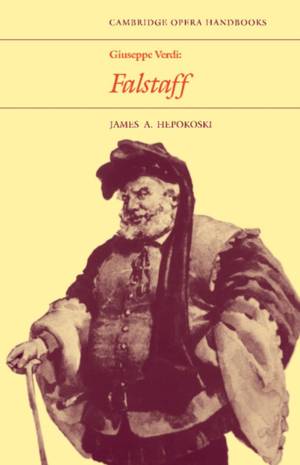
Je cadeautjes zeker op tijd in huis hebben voor de feestdagen? Kom langs in onze winkels en vind het perfecte geschenk!
- Afhalen na 1 uur in een winkel met voorraad
- Gratis thuislevering in België vanaf € 30
- Ruim aanbod met 7 miljoen producten
Je cadeautjes zeker op tijd in huis hebben voor de feestdagen? Kom langs in onze winkels en vind het perfecte geschenk!
- Afhalen na 1 uur in een winkel met voorraad
- Gratis thuislevering in België vanaf € 30
- Ruim aanbod met 7 miljoen producten
Zoeken
€ 40,45
+ 80 punten
Omschrijving
This book is a compact, up-to-date guide to the history and construction of Verdi's last - and possibly greatest - opera. Incorporating the findings of the most recent research, it provides performers, opera enthusiasts, students and scholars alike with a reliable summary of what is currently known about the work. The book gives a full synopsis of the plot and a detailed account both of Verdi's aims in composing the opera and of how he actually composed it: which portions were difficult for him, which he considered crucial, which were afterthoughts, etc. Special attention is given to separating the three versions of Falstaff that Verdi approved - versions that are still confused in almost all performances today. Professor Hepokoski also supplies extensive discussions of Boito's derivation of the plot and text from Shakespeare (and others); of the musical technique and structure of Falstaff; and of Verdi's own guidelines for interpretation, staging and singing. A guide to critical assessments of the opera illustrates the widely differing receptions the opera has had in the twentieth century, and a concluding essay by Graham Bradshaw discusses Shakespearean aspects of both Otello and Falstaff. The book contains a bibliography, a discography (by Malcolm Walker), illustrations of the original stage designs and costumes, and extensive musical examples.
Specificaties
Betrokkenen
- Auteur(s):
- Uitgeverij:
Inhoud
- Aantal bladzijden:
- 192
- Taal:
- Engels
- Reeks:
Eigenschappen
- Productcode (EAN):
- 9780521280167
- Verschijningsdatum:
- 10/11/1983
- Uitvoering:
- Paperback
- Formaat:
- Trade paperback (VS)
- Afmetingen:
- 138 mm x 215 mm
- Gewicht:
- 267 g

Alleen bij Standaard Boekhandel
+ 80 punten op je klantenkaart van Standaard Boekhandel
Beoordelingen
We publiceren alleen reviews die voldoen aan de voorwaarden voor reviews. Bekijk onze voorwaarden voor reviews.









